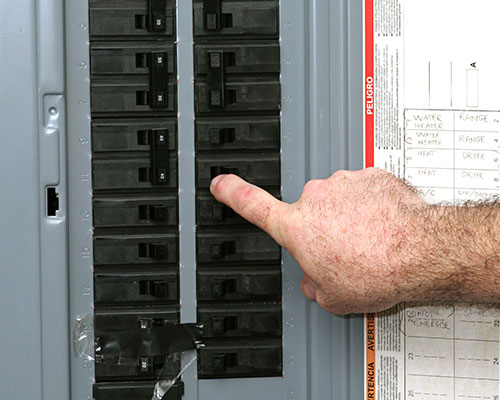
Is Your Electrical Panel Box Safe? Identifying and Addressing Common Hazards

Your home is your sanctuary, but lurking within its walls could be a hidden danger: an outdated and unsafe electrical panel box. These panels, prevalent in homes built before 1995, can pose significant risks, including fire hazards and electrocution. Understanding the dangers associated with these panels and knowing how to identify them is crucial for ensuring the safety of your household.
The Perils of Outdated Panels
Four types of electrical panels stand out as particularly hazardous:
- Federal Pacific Electric (FPE) Panels: Widely installed between the 1950s and 1980s, FPE panels have a notorious reputation for failing to trip during short circuits or overloads. This failure can lead to fires or personal injury, with reports of circuits still carrying power even when turned off.
- Zinsco or GTE/Sylvania Panels: These panels, popular in the 1970s, suffer from breakers melting onto the main bus bar, rendering them unable to trip during electrical faults. The presence of the Zinsco name or multicolored breaker handles is a red flag.
- Splitbus Electrical Panels: While not inherently unsafe, these panels, with their two buses and lack of a single main disconnect, may no longer meet modern safety standards. With age, the reliability of the breakers diminishes, potentially leaving circuits unprotected.
- Fuse Boxes: Common in older homes, fuse boxes use fuses to protect against overloads. However, modifications like overloading circuits or replacing fuses with larger ones can create serious fire hazards.
Identifying Unsafe Panels
Recognizing these hazardous panels is the first step in ensuring your home's safety:
- Inspecting the Panel: Check the panel's cover for brand names like "Federal Pacific Electric" or "Zinsco." Inside, look for indicators such as the "StabLoc" brand for FPE panels or the absence of a single main disconnect for splitbus panels.
- Visual Cues: Multicolored breaker handles, unusual configurations with multiple disconnects, or the presence of fuses instead of circuit breakers are telltale signs of potentially unsafe panels.
Addressing the Issue
If you suspect your home harbors one of these hazardous panels, prompt action is imperative:
- Replacement: Consider replacing the panel with a modern, code-compliant alternative. Upgrading ensures the safety and reliability of your electrical system, providing peace of mind for years to come.
- Professional Inspection: Engage the services of a qualified electrician to assess the panel's condition and recommend appropriate measures. An expert evaluation can uncover hidden hazards and prevent potential disasters.
- Safety Precautions: Until the panel is addressed, practice caution when dealing with electrical systems. Avoid overloading circuits, refrain from DIY modifications, and prioritize safety at all times.
Your home's electrical panel box is its lifeline, responsible for distributing power safely throughout your living space. However, outdated and unsafe panels can jeopardize the safety of your household, posing fire risks and electrical hazards. By familiarizing yourself with the common types of hazardous panels and taking proactive steps to address any concerns, you can safeguard your home and loved ones from potential disasters. Don't wait until it's too late—prioritize electrical safety today for a brighter, safer tomorrow.
Remember, when in doubt, consult a professional electrician. Contact Lehigh Valley Electric at 610-434-0508 or info@lehighvalleyelectric.com to schedule an evaluation of your electrical panel's safety. Your peace of mind is worth it.